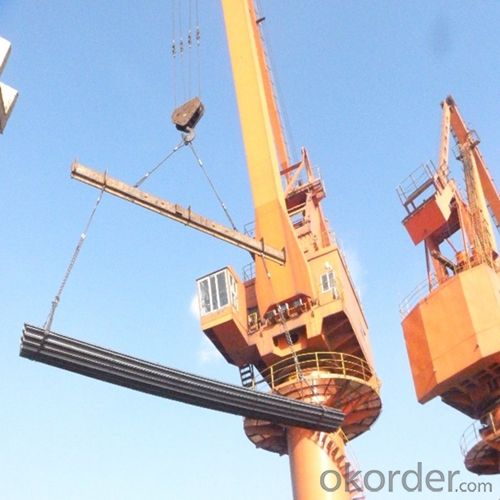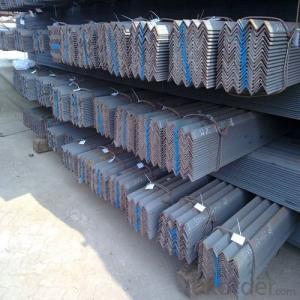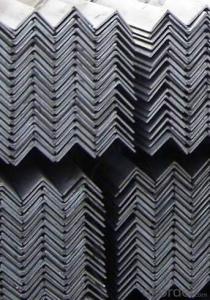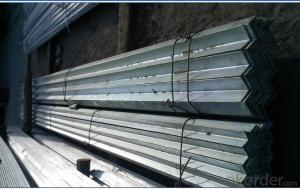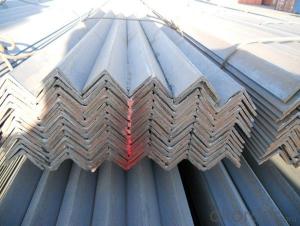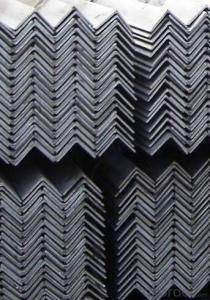Steel Bar in Angle Shape for Structure Construction with High Quality
- Loading Port:
- Tianjin
- Payment Terms:
- TT or LC
- Min Order Qty:
- 25 m.t.
- Supply Capability:
- 30000 m.t./month
OKorder Service Pledge
OKorder Financial Service
You Might Also Like
1. Structure of Steel Bar in Angle Shape Description:
Steel bar in angle shape is a main kind of structure steel and the section is like a letter L. We use steel bar in angle shape for structure construction. Steel bar in angle shape can be erected as soon as the materials are delivered on site. High strength, stiffness, toughness, and ductile properties are advantages of this kind of steel bar in angle shape.
2. Main Features of Steel Bar in Angle Shape:
• Strength - Having high strength, stiffness, toughness, and ductile properties, structural steel is one of the most commonly used materials in commercial and industrial building construction.
• Constructability - Steel equal angle Bar can be developed into nearly any shape, which are either bolted or welded together in construction. Structural steel can be erected as soon as the materials are delivered on site, whereas concrete must be cured at least 1–2 weeks after pouring before construction can continue, making steel a schedule-friendly construction material.
• Fire resistance - Steel is inherently a noncombustible material. However, when heated to temperatures seen in a fire scenario, the strength and stiffness of the material is significantly reduced. The steel equal angle bar can be enveloped in sufficient fire-resistant materials, increasing overall cost of steel structure buildings.
3. Steel Bar in Angle Shape Images:

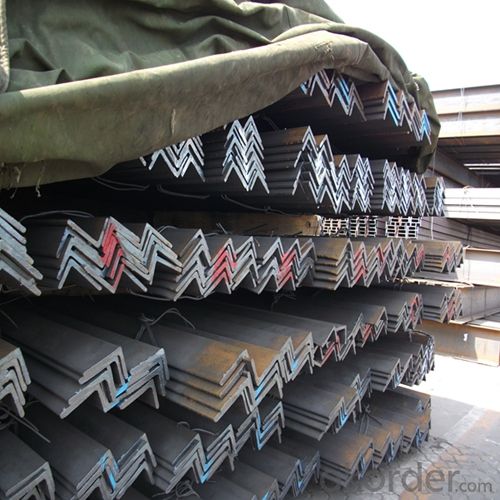
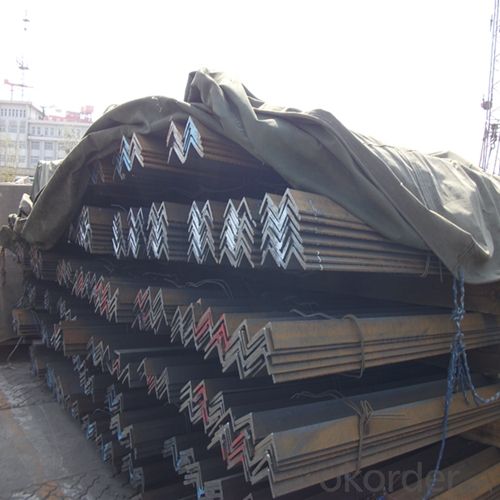
4. Steel Bar in Angle Shape Specification:
Angle | KG/M | Angle | KG/M | Angle | KG/M | Angle | KG/M |
20X20X3 | 0.889 | 60X60X5 | 4.570 | 90X90X8 | 10.946 | 130X130X12 | 23.600 |
20X20X4 | 1.145 | 60X60X6 | 5.427 | 90X90X9 | 12.220 | 130X130X13 | 25.400 |
25X25X2 | 0.763 | 63X63X4 | 3.907 | 90X90X10 | 13.476 | 130X130X14 | 27.200 |
25X25X3 | 1.124 | 63X63X5 | 4.822 | 90X90X15 | 15.940 | 130X130X16 | 30.900 |
25X25X4 | 1.459 | 63X63X6 | 5.721 | 100X100X6 | 9.366 | 140X140X10 | 21.488 |
30X30X2 | 0.922 | 63X63X8 | 7.469 | 100X100X7 | 10.830 | 140X140X12 | 25.522 |
30X30X3 | 1.373 | 63X63X10 | 9.151 | 100X100X8 | 12.276 | 140X140X14 | 29.490 |
30X30X4 | 1.786 | 70X70X4 | 4.372 | 100X100X10 | 15.120 | 140X140X15 | 31.451 |
36X36X3 | 1.656 | 70X70X5 | 5.397 | 100X100X12 | 17.898 | 140X140X16 | 33.393 |
5. FAQ
We have organized several common questions for our clients,may help you sincerely:
①How about the corrosion of the products?
When the steel equal angle bar in contact with water, can corrode, creating a potentially dangerous structure. Measures must be taken in structural steel construction to prevent any lifetime corrosion. The steel can be painted, providing water resistance. Also, the fire resistance material used to envelope steel is commonly water resistant.
②How to inspect the quality?
We have a professional inspection group which belongs to our company. We resolutely put an end to unqualified products flowing into the market. At the same time, we will provide necessary follow-up service assurance.
③What is the difference between steel angle bar and traditional material?
Steel equal angle bar differs from concrete in its attributed compressive strength as well as tensile strength.
- Q: What are the different surface treatments available for galvanized steel angles?
- Some of the different surface treatments available for galvanized steel angles include powder coating, painting, and hot-dip galvanizing. Additionally, there are options for epoxy coating and zinc-rich primers to enhance corrosion resistance and provide a desired aesthetic finish.
- Q: Can steel angles be used for soundproofing applications?
- Soundproofing applications typically do not involve the use of steel angles. When selecting soundproofing materials, their ability to absorb, dampen, or block sound waves is considered. Steel angles, being rigid and reflective, lack these sound-dampening qualities. Instead, acoustic foam, mass-loaded vinyl, or soundproof drywall are commonly chosen for soundproofing. These materials are specifically designed to absorb or block sound waves, reducing noise transmission between spaces. Consequently, although steel angles have diverse applications in construction and engineering, they are unsuitable for soundproofing purposes.
- Q: How do steel angles perform in corrosive environments?
- Steel angles exhibit good performance in corrosive environments, but their resistance to corrosion is contingent upon the type and grade of steel employed. Generally speaking, stainless steel angles and galvanized steel angles outperform carbon steel angles in terms of corrosion resistance. Stainless steel angles incorporate chromium, which generates a passive layer on the surface, thereby safeguarding against corrosion. Consequently, they possess heightened resistance to rust and other forms of corrosion, even in highly corrosive settings like saltwater or chemical plants. Galvanized steel angles, on the other hand, are steel angles that have been endowed with a zinc coating. This zinc coating functions as a sacrificial barricade, shielding the underlying steel from corrosion. In humid environments or ones exposed to moisture, galvanized steel angles excel due to their exceptional corrosion resistance facilitated by the zinc coating. Conversely, carbon steel angles are more susceptible to corrosion. In the absence of any protective coating, exposure to moisture or corrosive substances can lead to rust and corrosion in carbon steel angles. Nevertheless, there exist several methods to augment the corrosion resistance of carbon steel angles, such as the implementation of protective coatings or the utilization of corrosion inhibitors. In summary, steel angles can perform commendably in corrosive environments; however, the selection of steel grade and implementation of protective measures are pivotal for ensuring their long-term corrosion resistance. Stainless steel angles and galvanized steel angles are typically favored due to their superior corrosion resistance, while carbon steel angles necessitate supplementary safeguarding to ensure their durability in corrosive environments.
- Q: Can steel angles be used in the construction of sports stadiums?
- Yes, steel angles can be used in the construction of sports stadiums. Steel angles are versatile structural elements that can be used to support heavy loads and provide stability in large structures like sports stadiums. They are commonly used in the construction industry for various applications, including framing, support columns, and bracing systems. Steel angles offer excellent strength and durability, making them suitable for withstanding the dynamic forces and heavy loads experienced in sports stadiums. Additionally, steel angles can be easily fabricated and customized to fit the specific design and structural requirements of the stadium, offering flexibility in construction. Overall, steel angles are an ideal choice for the construction of sports stadiums due to their strength, versatility, and ability to withstand the unique demands of such large-scale structures.
- Q: How do you reinforce a steel angle for added strength?
- To reinforce a steel angle for added strength, there are several techniques you can employ. One common method is to weld additional steel plates or gussets to the angle's flanges. These plates or gussets are typically positioned perpendicular to the angle and are welded along their edges to create a stronger connection. This helps distribute the load and enhance the structural integrity of the angle. Another approach is to bolt or rivet additional steel plates or angles to the existing one, creating a sandwich-like structure. These additional plates or angles can be positioned on either side of the existing angle or even on top, depending on the specific requirements. Bolting or riveting them together ensures a secure connection and reinforces the angle's overall strength. Furthermore, reinforcing a steel angle can also be achieved by employing bracing techniques. This involves adding diagonal steel members, often referred to as braces, to the angle. Braces are typically attached to the angle at multiple points using welding or bolting methods. These braces help redistribute the forces acting on the angle and prevent excessive deflection or bending, thereby increasing its strength. It is important to note that the specific reinforcement method chosen depends on factors such as the load or force the angle will experience, the desired level of strength, and the available resources. Consulting with a structural engineer or a professional in the field is highly recommended to ensure the appropriate reinforcement technique is selected and implemented correctly.
- Q: Do steel angles come with any warranties?
- Indeed, warranties are usually included with steel angles. The particular terms of the warranty may differ contingent upon the manufacturer or supplier. Nevertheless, reputable companies commonly provide warranties to guarantee the excellence and functionality of their steel angles. These warranties generally encompass flaws in materials or workmanship and can span from a few months to numerous years. It is prudent to review the manufacturer or supplier's warranty terms and conditions prior to acquiring steel angles to comprehend the scope and duration of the warranty coverage.
- Q: What is the maximum bending moment for a steel angle?
- The maximum bending moment for a steel angle depends on various factors such as the dimensions and properties of the angle, the applied load, and the support conditions. In general, the maximum bending moment occurs at the location where the angle experiences the highest stress due to the applied load. To determine the maximum bending moment for a steel angle, one needs to consider the angle's section modulus (a measure of its resistance to bending), the distance between the applied load and the support, and the magnitude and distribution of the load. The section modulus is calculated based on the angle's dimensions, including its thickness, height, and width. By analyzing the applied load and the support conditions using principles of structural mechanics, engineers can determine the maximum bending moment for a steel angle. This information is crucial for designing and assessing the structural integrity of steel angle components in various applications, such as construction, manufacturing, and infrastructure projects. It is important to note that the maximum bending moment can vary significantly depending on the specific angle's dimensions, material properties, and the applied load. Therefore, it is necessary to consult relevant design codes, standards, or consult a qualified structural engineer for accurate and detailed calculations specific to a particular steel angle.
- Q: Are steel angles suitable for manufacturing equipment enclosures?
- Yes, steel angles are suitable for manufacturing equipment enclosures. Steel angles are commonly used in construction and manufacturing applications due to their strength and durability. They provide a sturdy framework for enclosing equipment and can be easily welded or bolted together to create a secure enclosure. Additionally, steel angles can be customized to fit specific dimensions and can be easily modified or extended if needed. Overall, steel angles offer a reliable and cost-effective solution for manufacturing equipment enclosures.
- Q: What is the carbon content of steel angles?
- The carbon content of steel angles can vary depending on the specific grade and type of steel being used. Generally, carbon steel angles have a carbon content ranging from 0.05% to 0.25%. However, some high carbon steel angles can have a carbon content up to 2.1%. The carbon content of steel angles is an important factor as it influences the strength, hardness, and overall properties of the steel.
- Q: How do you determine the required number of steel angles for a project?
- Determining the necessary quantity of steel angles for a project involves taking into account several factors. First and foremost, it is crucial to comprehend the project's design and specifications. This encompasses the structural prerequisites, load-bearing capacities, and any specific angles or dimensions that must be incorporated. Subsequently, the dimensions of the steel angles need to be ascertained based on the intended utilization and structural prerequisites. This entails considering the suitable length, width, and thickness of the angles for the project. Once the dimensions are established, the subsequent step involves calculating the requisite number of angles. This can be accomplished by meticulously measuring and estimating the lengths of the steel angles required in each area of the project. It is important to take into account any potential waste or additional cuts that might be necessary during the installation process. Furthermore, it is advisable to seek advice from structural engineers or professionals well-versed in steel fabrication to ensure precise calculations and to confirm that the chosen steel angles fulfill the necessary safety standards and building codes. Ultimately, determining the necessary quantity of steel angles for a project necessitates a combination of meticulous planning, accurate measurements, and professional expertise to guarantee that the project is structurally sound and meets all the necessary requirements.
Send your message to us
Steel Bar in Angle Shape for Structure Construction with High Quality
- Loading Port:
- Tianjin
- Payment Terms:
- TT or LC
- Min Order Qty:
- 25 m.t.
- Supply Capability:
- 30000 m.t./month
OKorder Service Pledge
OKorder Financial Service
Similar products
Hot products
Hot Searches
Related keywords




